Maltese Food Dishes: Basic Overview
Common Ingredients
Common Cooking Methods
Courses
Meals
Key Taste
Eating Etiquette
Meal Presentation
Culinary Festivals
Influence and Fusion
Popular Types of Maltese Dishes
-
Stews
In Maltese cuisine, stews are hearty and rich, often made with meat like rabbit or horse or seafood like octopus.
These dishes are slowly cooked with wine and a mix of spices, herbs, and sometimes, vegetables.
The stews can sometimes be served over pasta as a separate course.
-
Soups
Maltese soups are a mix of flavors and textures, ranging from light and brothy to thick and hearty.
Ingredients like vegetables, legumes, and sometimes fish, create a comforting bowl that’s perfect for any season.
These soups are often enjoyed with a side of crusty Maltese bread.
-
Casseroles and bakes
Casseroles and bakes in Malta often feature pasta or rice with layers of meat, sauce, and cheese.
Ingredients like macaroni, eggs, and various meats are common, making these dishes a favorite for family gatherings.
-
Bread and doughs
From the crusty, sourdough loaves to the soft, stuffed ftira, these Maltese breads are versatile and enjoyed at all times of the day.
They can be dipped in sauces, stuffed with local cheeses and meats, or simply enjoyed with olive oil and tomatoes.
-
Cakes and Pastries
Cakes and pastries in Malta vary from rich, nutty cakes to light, fried pastries. Ingredients like almonds, chocolate, and local fruits often feature in these desserts.
Seasonal and festive pastries are common, with each celebration bringing its own special dessert.
Maltese dishes reflect Malta’s rich history, showcasing a blend of Italian, Spanish, French, Provençal, and other Mediterranean influences, with a touch of British fares in the country’s culinary tradition.
Due to its strategic location and history of foreign rule, Maltese food has absorbed and adapted a variety of foreign dishes, creating a unique culinary identity. Maltese dishes are characterized by the use of fresh, local ingredients and feature a variety of specialties.
Seasonal variations and regional differences add to the diversity of Maltese cuisine, making it a rich tapestry of flavors and traditions.
Dive into the dish options of Malta before digging into the food history along with some refreshment choices to have these specialties.
34 Most Popular Maltese Dishes with Filters
Below are 34 most famous Maltese dishes, arranged by their popularity. Learn more about Maltese dishes by making use of the filter system to view these dishes in alphabetical order, including dish types, cooking methods, key ingredients, tastes, and even their global popularity.
Then, go through the most popular fares along with traditional, national, and street food options in Malta.
Stuffat Tal-Fenek
- National
- Traditional
Stuffat tal-fenek is Malta’s national dish of rabbit stew with tender vegetables. Originating from the Phoenicians, its popularity surged in the Roman era, valued for its purported beauty benefits.
This dish combines rabbit meat with bold Maltese spices, herbs, root vegetables, and wine. Traditionally best enjoyed in a local home, stuffat tal-fenek represents a cherished part of Maltese cuisine.
Often, the stew can also be served in two courses, with the first one about pouring the sauce over the pasta while the second course comes with rabbit and vegetables.
Braġioli
- Traditional
Braġioli is a Maltese specialty translated into “beef olives”. However, there are no olives involved in making the dish.
These beef rolls are stuffed with various ingredients and slow-cooked in red wine. About the stuffings’ components, bacon, hard-boiled eggs, bread crumbs, and mixed herbs are what to expect in braġioli.
Maltese people prefer eating this food with several slices of bread, starchy potatoes, or peas.
Fenek Moqli
- Street Food
- Traditional
Fenek moqli is a Maltese delicacy of fried rabbits, with its usual accompaniments of crusty bread, fries, salad, and baked potatoes.
This fried rabbit dish is prepared by marinating the meat in white wine, sunflower oil, and herbs to mitigate any gamey taste before frying it to perfection.
Laħam Fuq Il-Fwar
- Traditional
Laħam fuq il-fwar is a Maltese dish known for its simplicity and rich flavors, traditionally featuring minute steak as the key ingredient.
The preparation involves wrapping meat, vegetables, herbs, onions, garlic, and bread crumbs in foil, then steaming everything for an hour above boiling water.
This unique cooking method preserves the broth’s delicious flavors. While beef is a common choice, a pork variation offers an equally tantalizing experience, with meat so tender it effortlessly falls off the bone.
Laħam Taz-Ziemel
- Traditional
Laħam taz-ziemel is a stew made using horse meat and celebrated for its distinctive taste. This dish is traditionally prepared by stewing the meat in red wine and enhancing it with a blend of aromatic spices and condiment.
To complement the rich taste of laħam taz-ziemel, it is often served with a choice of starchy bases like bread and potatoes, with a recommendation to enjoy both for the full experience.
Zalzett Tal-Malti
- Street Food
- Traditional
Zalzett tal-malti is a traditional Maltese sausage combining pork, peppercorns, crushed coriander seeds, and aromatic spices. The name “zalzett” is derived from a Maltese saying, “Iż-żmien itwal miz-zalzett” (“Age is longer than sausage”).
The preparation of this sausage reflects the influence of British culinary traditions. Unlike other sausages typically enjoyed grilled or cooked, Maltese people often savor zalzett tal-malti raw.
Torta Tal-Lampuki
- Traditional
Torta tal-lampuki is a beloved traditional Maltese fish pie, a staple in every Maltese household known for its delicious blend of vegetables, tomatoes, and tender lampuki fish flesh.
This pie exclusively features lampuki (mahi-mahi or dorado), a fish that is most abundant in Malta between August and December. The succulent fish flesh, combined with the rich flavors of the pie, creates an unforgettable taste.
Kusksu
- Traditional
Kusksu is a traditional vegetable soup from Malta, a Mediterranean island nation. This hearty and nourishing dish combines peas, broad beans, and giant couscous.
Typically prepared in spring to utilize fresh, seasonal vegetables, kusksu soup is commonly served with crusty Maltese bread, and, sometimes, mozzarella balls at the center of the bowl for an extra touch of flavor and texture.
Alijotta
- Traditional
Alijotta is a traditional Maltese fish stew, often savored during Lent or at family gatherings. The stew’s broth is the main attraction to the dish, with a rich and exquisite profile crafted from fish bones, fresh herbs, vegetables, garlic, and citrus zest.
While various types of fish can be used, rockfish is particularly praised for its exceptional contribution to the stew’s flavor, offering a broth that is unparalleled.
Stuffat Tal-Qarnita
- Traditional
Stuffat tal-qarnita is a Maltese specialty featuring tenderly cut octopus. To ensure a pleasant taste, the octopus is briefly blanched in boiling water to remove any unwanted odors.
The dish is richly flavored with garlic, cloves, a special tomato paste known as kunserva, fresh diced tomatoes, and a zest of orange or lemon.
For the perfect pairing, stuffat tal-qarnita is traditionally served with crispy hobza (Maltese bread) or mixed into cooked spaghetti, creating the beloved spaghetti biz-zalza tal-qarnit.
Klamari Mimlija
- Traditional
Klamari mimlija is a Maltese dish featuring stuffed calamari with various ingredients. The filling typically combines ricotta, chopped tentacles, breadcrumbs, and onions, carefully stuffed into the squid before frying or baking.
When served, a drizzle of fresh lime juice and tomato sauce complements the stuffed squid for a mild sourness.
Pixxispad Mimli
- Traditional
Pixxispad mimli is a grilled swordfish dish in Malta. Caught by Maltese anglers from July to mid-September, the swordfish used in this dish is of the highest quality.
Notably, swordfish offers a meaty texture and retains an incredible juiciness when grilled. The preparation of pixxispad mimli is straightforward, relying on the swordfish’s natural flavors.
Il-Ħobż Tal-Malti
- Street Food
- Traditional
Il-Ħobż Tal-Malti is Malta’s signature sourdough bread. Characterized by a hard, crusty exterior and a soft, spongy white interior, it embodies the perfect balance of textures.
To experience a truly Maltese-style breakfast, pairing Il-Ħobż Tal-Malti with bigilla, a traditional bean dip or spread, comes highly recommended.
In Qormi, the city is renowned for its bread, often holding a festival called Lejl f’Casal Fornaro on the third Saturday of October.
Ftira
- Street Food
- Traditional
Ftira is a traditional ring bread, recognized for its unique dough-made disc shape, often featured in lunchrooms across Malta. Often, people stuff the sandwich with fillings like gbejna (Maltese cheese), fried eggs, or bacon.
Originating in the 16th century, ftira has been a beloved staple in Maltese cuisine for centuries. The bread even has a variation known as Gozo fritra, serving like a pizza with thinly sliced potato as toppings.
Ftira Ghawdxija
- Street Food
- Traditional
Ftira ghawdxija is a bread dish in Malta presented like a pizza with traditional Maltese bread, ftira, as its base. This Gozitan variant stands out with its topping of round potato slices.
This pizza-like dish calls for ingredients like tuna and anchovies, and vegetables such as olives, tomatoes, and capers.
Prinjolata
- Street Food
- Traditional
Prinjolata is a traditional Maltese dessert, celebrated for its pine nuts that garnish both its filling and topping. This no-bake, dome-shaped cake combines biscuits, cake, nuts, and buttercream, all cloaked in Italian meringue and various toppings.
The treat is a special delicacy of the Maltese Carnival, a festivity with roots in the 1400s and popularized by the Knights of St John. Often, prinjolata is savored five days before leading up to Ash Wednesday.
Known for its sweet richness, this dessert is typically served in generous portions, making it a perfect companion to coffee or tea.
Pudina Tal-Ħobż
- Traditional
Pudina tal-hobż is a traditional Maltese dessert that makes full use of stale bread. Originating in the 18th century, this creative approach to minimizing waste led to the creation of a beloved sweet treat.
While the specific recipe for this bread pudding varies among families, the basic method involves soaking old bread in a liquid mixture, enhancing it with various condiments for flavor, and adding citrus zest to impart a refreshing aroma.
Figolli
- Traditional
Figolli is a festive Maltese cookie, traditionally shaped into animals and enjoyed particularly during Easter. These cookies, once limited to lamb and rabbit shapes, now come in a variety of forms, including fish and ducks.
What sets them apart from other biscuits is the indulgent melted chocolate filling and the sweet sugary icing that crowns each cookie.
Kannoli
- Street Food
- Traditional
Kannoli is a Maltese delicacy of fried pastries with a hollow part in the middle. These crunchy pastries are often filled with various sweet ingredients.
These tubes often come from 9 to 20 centimeters in length and are traditionally filled with sweet and creamy ricotta.
Ġbejna
- Street Food
- Traditional
Ġbejna is a traditional Maltese cheese crafted from sheep’s milk, salt, and rennet, taking shape in hurdles made from dried reeds or plastic and often dried in ventilated rooms.
Historically, seawater served as a curdling agent. Available in fresh, sundried, salt-cured, or peppered varieties, ġbejna boasts diverse textures and flavors and can be preserved in oil or vinegar.
Sold in fresh, dried, or cured forms, ġbejniet goes well with seasonings like pepper or herbs, enjoyed deep-fried as an appetizer.
Imqaret
- Street Food
Imqaret is an Arabian-originated pastry that came to Malta many centuries ago. It is a deep-fried pastry often enjoyed hot with some lovely citrusy scents and an anise-reminiscent smell from a special liqueur.
Nowadays, these pieces of imqaret are found at mini kiosks, street vendors, or on any occasion around Malta.
Kwareżimal
- Traditional
Kwareżimal is a traditional Maltese biscuit, made vegan and typically prepared during Lent. Ideally, the biscuit combines flour with sugar, ground almonds, sugar, and orange rinds.
Its origins trace back to the Knights of Malta, who classified sugar as a spice, thus permissible in Lenten fasting.
The name itself derives from the Italian word for Lent, “quarezima,” symbolizing the 40 days of fasting.
Zeppoli
- Traditional
Zeppoli is a deep-fried pastry in Malta and Sicily, especially on Saint Joseph’s Day, a Catholic feast and public holiday in the region.
Known as zeppoli or sfineg on the island, they come in two varieties of a sweet version filled with ricotta, pastry cream, or custard, and a savory version filled with anchovy, referred to as sfinge, which is particularly popular during Lent.
Zeppoli often symbolizes the patronage of Saint Joseph across various villages and towns, including Rabat, Kalkara, Zejtun, Msida, Manikata, and Qala.
Kawlata
- Traditional
Kawlata is a hearty Maltese vegetable soup, traditionally prepared with cabbage and pork during the colder winter months. This wholesome dish is a combination of flavors, enriched with beans, pasta, and cheese, and seasoned with aromatic spices.
Qagħaq tal-Għasel
- Street Food
- Traditional
Qagħaq tal-għasel is a Maltese sweet treat, traditionally associated with Christmas but now enjoyed year-round. These sweet rings boast a filling rich in the aromas of star anise and cloves, complemented by the deep sweetness of treacle and blackstrap molasses.
The delight of consuming qagħaq tal-għasel lies in breaking the ring to reveal oozing, flavorful filling.
Pastizz
- Street Food
Pastizz is a savory pastry in Malta with fillings including ricotta, peas, or chicken. Crafted from a delicate, flaky pastry, each variety is distinctively folded to signify its filling.
As a staple of Maltese cuisine, pastizz are often enjoyed during the celebration of Saint Joseph’s Day. These pastries are traditionally baked and found from pastizzeriji to bars, cafes, and street vendors.
Qassatat
- Street Food
- Traditional
Qassatat is a Maltese pastry having a round shape that is almost like a dumpling.
Originating in the 16th century during the era of the Knights of St. John, these dumpling-shaped pastries feature a shortcrust pastry that is slightly thicker.
Filled with a variety of ingredients, including the popular ricotta, qassatat is cherished for its convenience as a street food and light treat, especially during the sacred period of Lent.
Timpana
- Street Food
- Traditional
Timpana is a pasta pie dish in Malta that intriguingly uses macaroni as a pie filling. This hearty pie consists of layers of shortcrust pastry filled with cooked macaroni, proteins such as diced chicken liver, bacon, minced pork, or beef.
Baked until it achieves a dark amber hue, timpana serves as a fulfilling centerpiece for a Maltese dinner.
Bigilla
- Street Food
- Traditional
Bigilla is a traditional Maltese bean dipping (or spread for bread/crackers) frequently served as an “hors d’oeuvre” (appetizer) or as a snack. This savory dip is mainly made of mashed beans.
Ful ta’ girba (or dried tic beans, djerba beans) is typically the main component for bigilla. Some garlic, olive oil, and fresh herbs (mint/basil/parsley) are also used to add layers of aroma to the spread.
Soppa Tal-Armla
- Traditional
Soppa Tal-Armla is a traditional Maltese food with its name translated to “widow’s soup” because the ingredients to make the food are basic and affordable to the widows (who used to be poor).
Nowadays, when life has become better, the components that soppa tal-armla calls for remain the same, consisting only Ġbejna, root veggies (potatoes, carrots), and legumes (broad beans).
Minestra
- Traditional
Minestra is another kind of vegetarian-friendly soup with the Maltese version having its name derived from the Sicilian minestra. The Maltese one needs only vegetable components such as marrow, carrots, and pumpkins.
Sometimes, Maltese people add some pasta and beans to make it heartier.
Minestra is also a soup that people in Malta will enjoy when the winter comes with some slices of toasted Maltese bread.
Kapunata
- Traditional
Kapunata is a vegetarian dish renowned as the Maltese version of ratatouille (a specialty in Provence, France). The food is believed to have first appeared in Malta long ago and is increasingly a staple in the Maltese generations’ hearts.
You can also find another variation in its neighbor, Sicily’s caponata. Maltese kapunata has various veggies (tomatoes, eggplants, onions, olives, and capers). Vinegar will be added to the thick soup-base dish to enhance the flavor profile.
While you can have two ways to serve your Kapunata (hot or cold), some crispy slices of Maltese bread are always a must. Maltese people sometimes enjoy their treat with a plate of tuna steak.
Imqarrun Il-Forn
- Traditional
Imqarrun il-forn is widely loved in Malta, having its origin in Sicily, Italy. Every household will have its own recipes for this baked pasta creation using a large array of ingredients.
Interestingly this baked pasta is lighter and more basic. A standard portion of imqarrun il-forn includes only macaroni, meat sauce (Ragù), cheese, and boiled eggs.
Platt Malti
- Traditional
Platt malti is a Maltese plate bringing together a wide array of specialties for a communal tasting experience.
It allows diners to sample small portions of various local delicacies, such as gbejna, kapunata, bigilla, sundried tomatoes, and zalzett tal-malti, among others.
This assortment, which can range from a seafood platter to a selection of cheeses and meats, is designed to offer a pinch of each beloved Maltese flavor, pairing well with a glass of fine wine.
What Maltese Dishes to Pair with Beverages?
To make Maltese dishes better, you should consider pairing them with some exciting refreshments. Check out these delectable combos:
After noting down your favorite food combos, uncover the backstory of Maltese food to further understand the country’s tasty dishes.
What Is the History of Maltese Food?
Maltese food is deeply rooted in the island’s history, reflecting a blend of Italian, Spanish, French, Provençal, and other Mediterranean influences, with later British culinary additions.
Its development was significantly shaped by Malta’s strategic position along important trade routes and the necessity to import most foodstuffs, making the cuisine open to external influences.
The presence of the Knights of St John and, later, the British, introduced elements from afar, including the adaptation of foreign dishes and tastes. Maltese cuisine’s evolution is marked by the adaptation and transformation of foreign influences.
Are there any other foods that you think should be included here? Feel free to comment on the dish’s name below to share it with me. Also, share these Maltese fares with others around you.



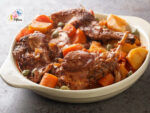
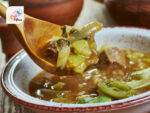
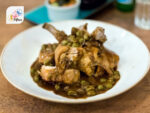
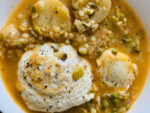
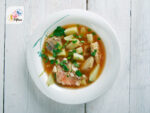
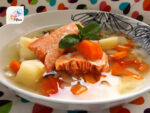

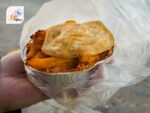
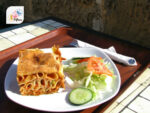


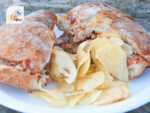
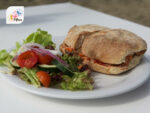
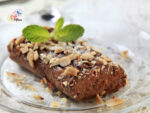


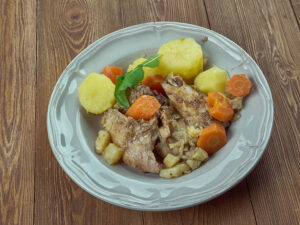
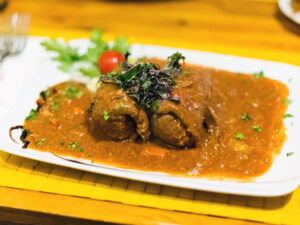
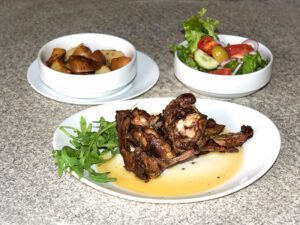
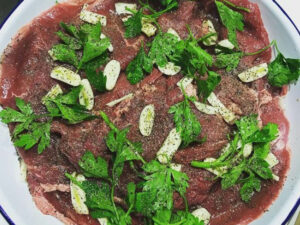
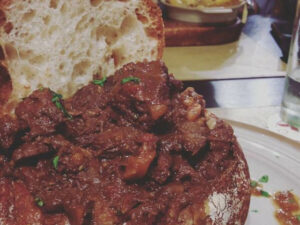
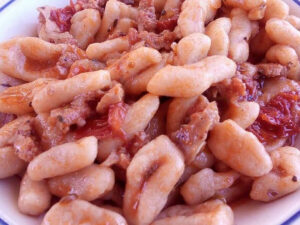
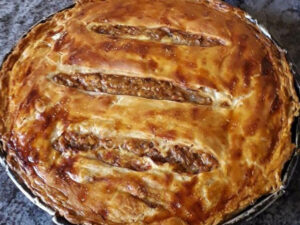
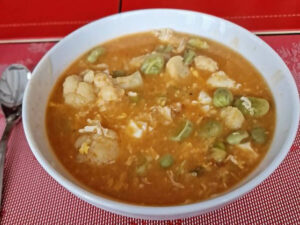
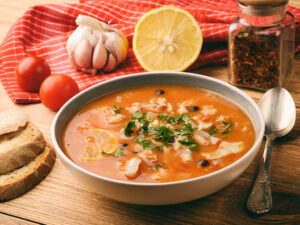
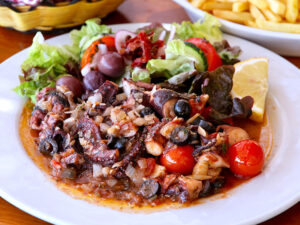
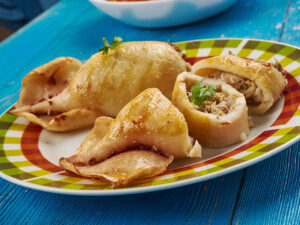
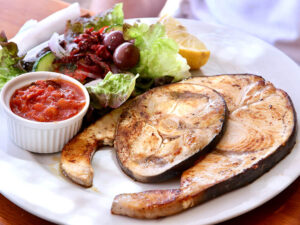
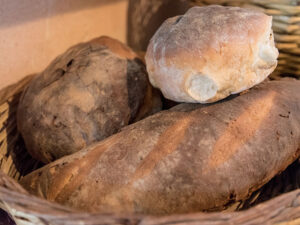
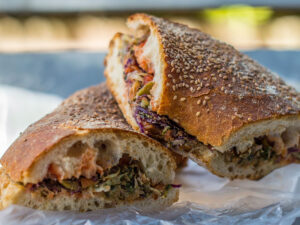
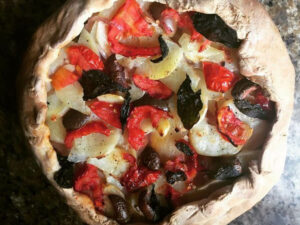
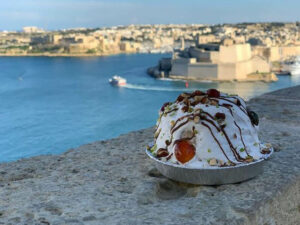
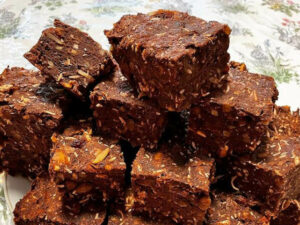
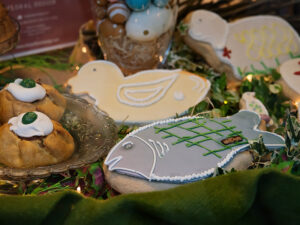
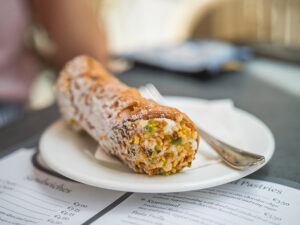
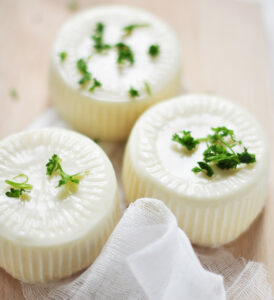
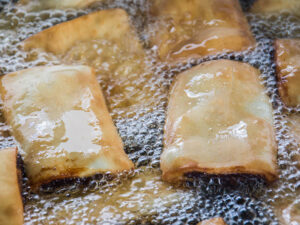
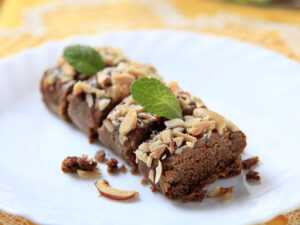

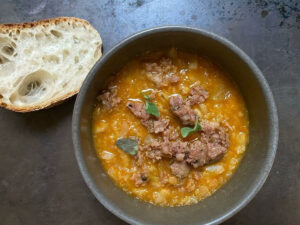
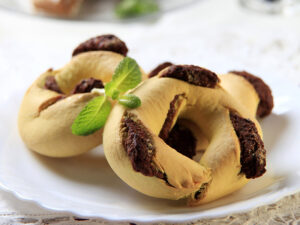
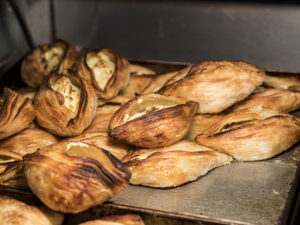
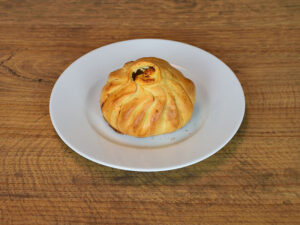
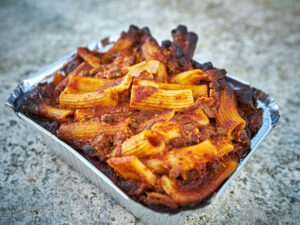
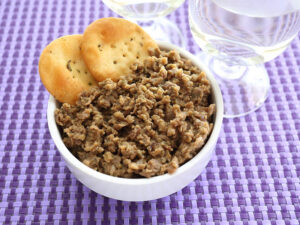
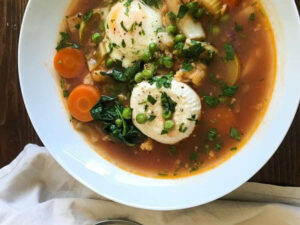
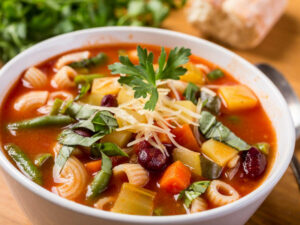
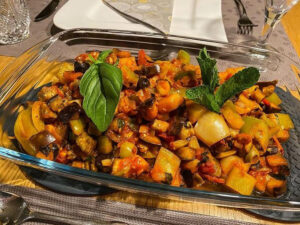
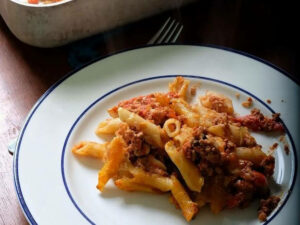
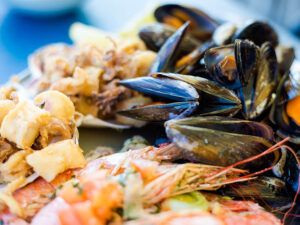

Jamie Scott
Editor in Chief, Senior Content Writer
Expertise
Home Cooking, Meal Planning, Recipe Development, Baking and Pastry, Food Editor, Cooking-video Maker, Western Food Evaluation Expert
Education
Le Cordon Bleu College of Culinary Arts
Local Community College, New York, NY
Jamie Scott is a skilled culinary expert and content creator specializing in Western cuisine. With over 15 years in the culinary field and formal training from Le Cordon Bleu, Paris, Jamie deeply understands how to blend nutrition with delicious flavors. His passion for cooking matches his commitment to making healthy eating accessible and enjoyable.
On Fifteen.net, Jamie brings a fresh perspective to classic dishes and beverages, offering readers insightful recipes, cooking tips, and a fresh view on meal planning that emphasizes taste, health, and simplicity.